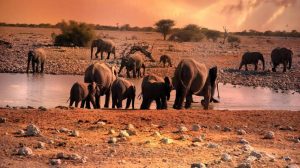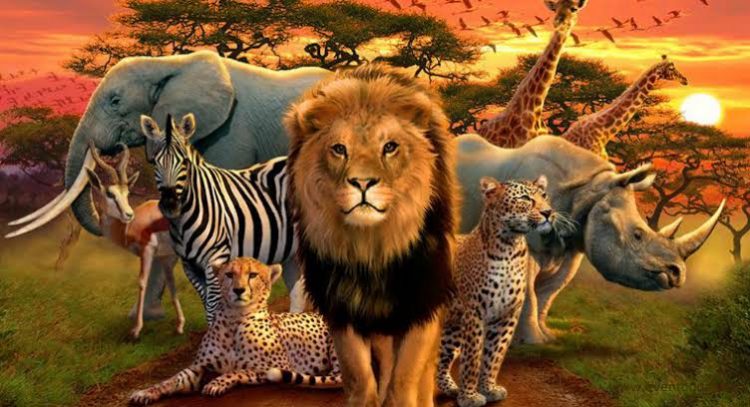
GABON:A HAVEN OF WILDLIFE
can you imagine a tropical beach where elephants graze by seaside, hippos swim,and whales and dolphins gather offshore ? On the African coast, there are 60 miles of beaches where such scenes are still common.
For such scenes to be enjoyed in future, this unique coastal area would clearly need to be preserved. Happily, this conservative priority was addressed on September 4,2002,when the then President of Gabon announced that 10 percent of Gabon,including stretches of pristine coastline-would be set aside as national parks.
These wilderness areas covering some 10,000 square miles, equivalent to the size of Belgium,have much to offer.”Gabon has the potential to become a natural Mecca attracting pilgrims from the four points of the compass in search of the last remaining natural wonders on earth”,noted President Omar Bongo Ondimba.
WHAT MAKES THESE RESERVES SO IMPORTANT ?
Some 85 percent of Gabon is still forested,and as many as 20 percent of its plant species are found nowhere else on earth. Furthermore, its equatorial forests offer a haven for lowland gorillas,chimpanzees, forest elephants and many other threatened species. The recently created parks will convert Gabon into an outstanding custodian of African biodiversity.
LAONGA-A BEACH LIKE NO OTHER
Laonga National park is possibly one of the most outstanding wildlife destinations in Africa. It conserves miles of unspoiled beaches fringed by freshwater lagoons and dense equatorial forest. But what really make Loango’s beaches unique are the animals that walk along the sand-field,hippos,forest elephants, buffaloes Leopards, and gorillas.
WHY DOES THE BEACH ATTRACT THOSE ANIMALS OF THE FOREST ?
Lining Loango’s white,sandy beaches are pastures where hippos and buffaloes can graze.Ronier palm trees, which grow alongside the beach, produce abundant fruit that attracts forest elephants almost as much as ice cream attracts children.But most important of all is the solutitude.The only footprints on the sand are those of animals.
The absence of human intrusion encourages the endangered leatherback turtles to choose these lonely beaches as a place to lay their eggs.Rosy bee-eaters have similar nesting tastes.and they excavate their colonial nests in the sand just a few yard above the high-water mark .During the summer months over a thousand humpback whales congregate in Loango’s undisturbed waters to mate.
Two immense lagoons separate the beaches of Loango from the equatorial forest ,and provide an ideal habitat for crocodiles and hippos. Fish are plentiful in these inland seas,whose banks are lined with mangrove forests. African fish eagles and ospreys scour the open water of the lagoons, while serveral species of colorful kingfishers search for fish in the shallow waters.Elephants, who love water,happily swim across the lagoos to reach the beach and gorge on their favorite fruit.
Inside the equatorial forest,monkeys scamper along the upper branches of the canopy while colorful butterflies glide around the sunny clearings.Fruit bats roost in their favorite trees during the day and then ,during the night, go about their vital work of spreading sees throughout the forest.At the forest edges, glittering sunbirds sip nectar from flowering trees and bushes. Under standably,Loango has aptly been described as “a place where you can experience the mood of equatorial Africa.”
A HAVEN OF BIODIVERSITY
Loango and Lope are only two of Gabon’s 13 national parks. Other parks preserve mangrove forests,protect unique flora,and safeguard areas for migratory birds.”Gabon has set aside the best ecosystems found in the entire country”,explains Lee White of Wildlife Conservation Society. It is not just the size but the quality of the areas conserved that matters. In 2002,they created overnight an optimum national park system, one that captures all the biodiversity of the country.
Lope National park includes large tracts of virgin rain forest,along with a patchwork of Savannah and gallery forest in the north of the park.It is an ideal place for nature lovers who would like to observe gorillas,chimpanzees or mandrills in the wild.There are between 3,000 and 5,000 gorillas roaming the 2,000 square miles of protected area.


READ ALSO
No Content Available














